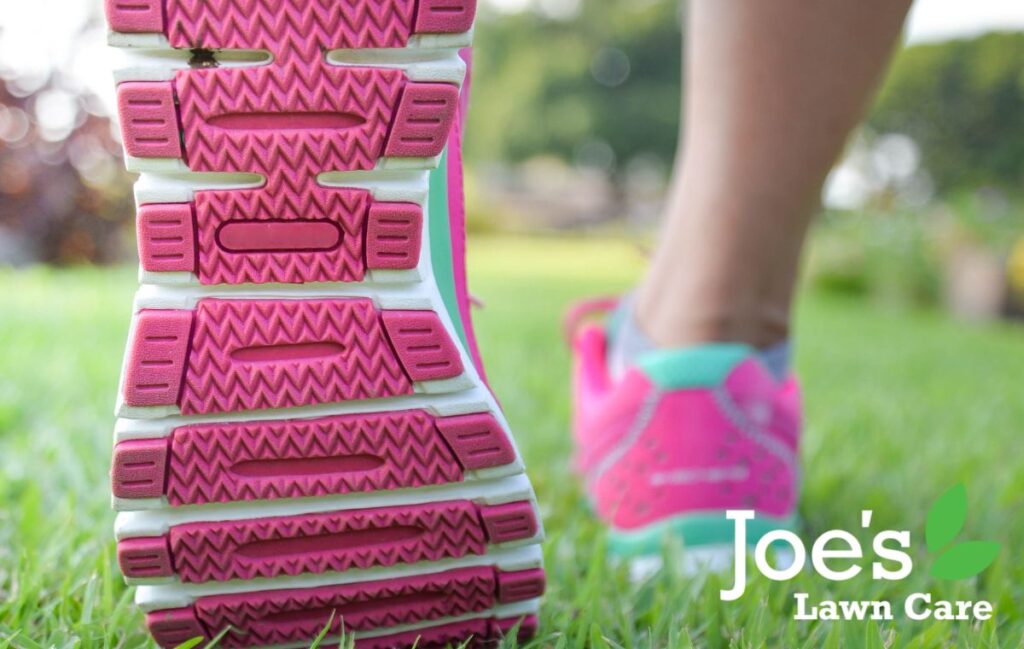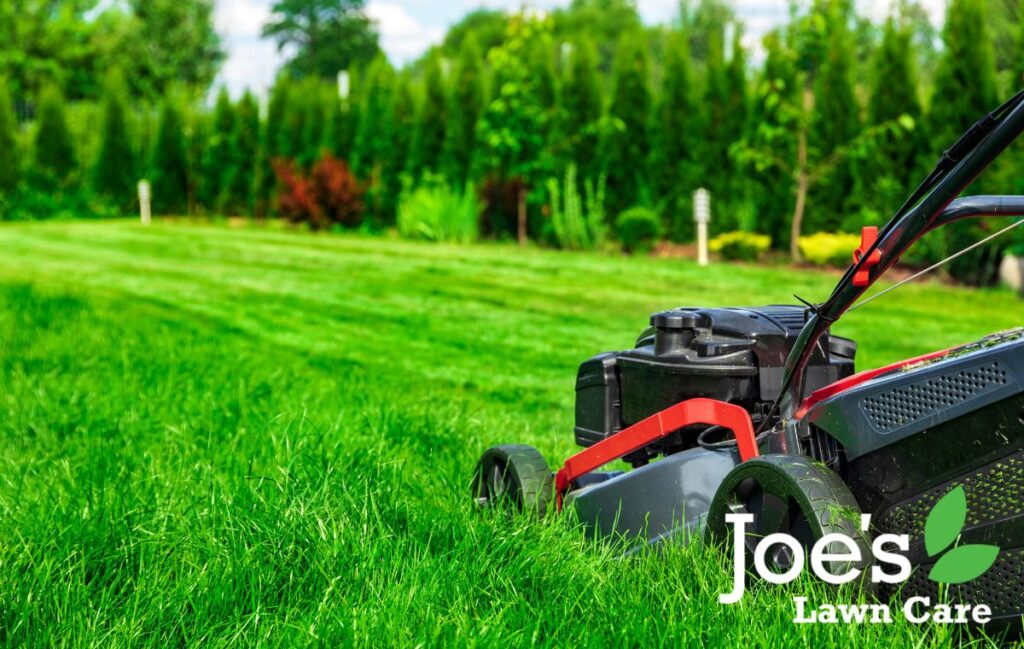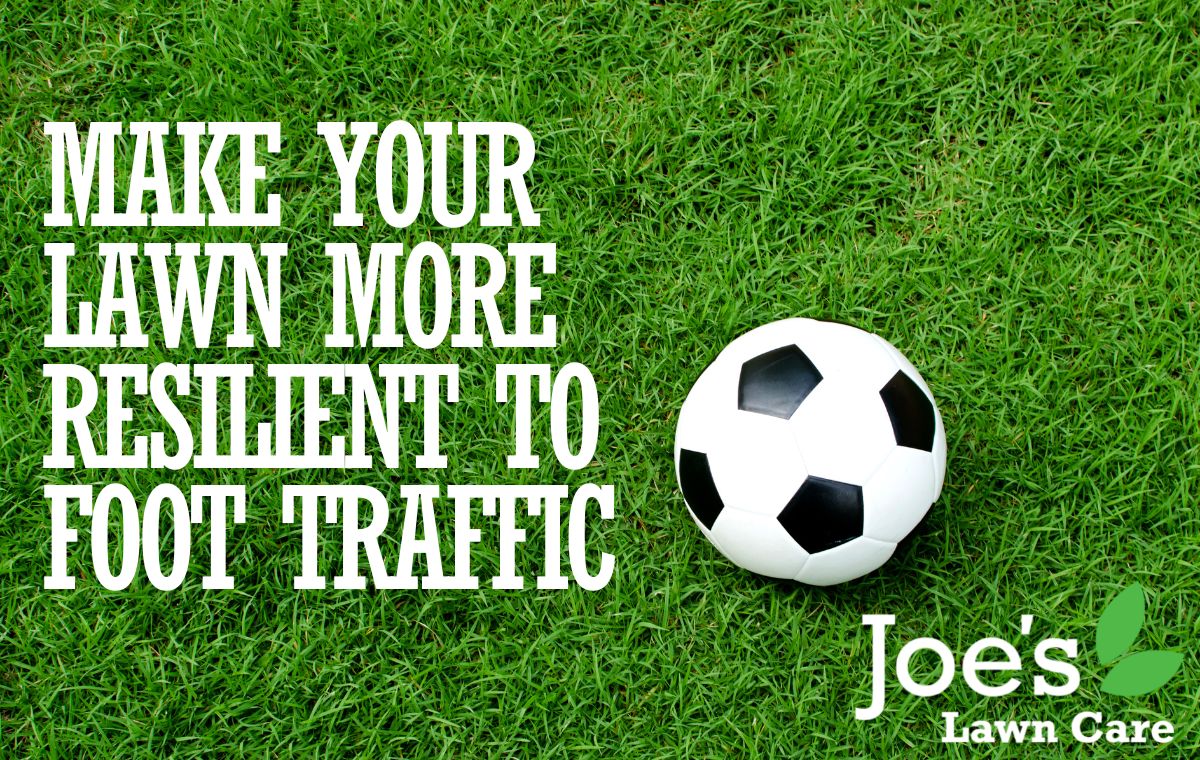Make Your Lawn More Resilient To Foot Traffic
If you like to use your lawn for weekend barbeques, kids’ football games, or playing with pets, the amount of wear this does to the grass might be quite frustrating.
Even if you have a more ornamental lawn that doesn’t get much foot traffic, it’s always good to make your grass more resilient to being walked on. This way you won’t have to worry about wearing it down when gardening or mowing.
In this guide, we’ve explained three things you can do to make your lawn more resilient to foot traffic.

1. Help your lawn get more nutrients
The stronger and healthier your lawn, the better it will be able to withstand foot traffic. Therefore, to make your lawn more resilient. The most important thing to do is ensure it’s getting plenty of nutrients.
A common way to do this is to mulch your grass clippings – meaning to leave them in place on your lawn as you mow. However, there are some issues with doing this:
- You need to right mower. Not all lawn mowers are designed to mulch grass clippings. And if you just take off the grass box, you’ll be spraying clippings all over your legs. To mulch correctly, you want the clippings to circulate the cutting deck multiple times, being chopped up into very fine pieces.
- Mulch can clump up, especially if the lawn is damp, blocking sunlight from your grass.
- Mulch can worsen an existing thatch problem. This means that you’ll need to scarify your lawn more often to ensure that its roots are getting enough air and moisture.
Not to mention, spraying grass clippings all over your lawn looks quite unsightly.
Instead, you might want to use an organic lawn feed. Feeds you can buy from DIY stores aren’t as long lasting as what the professionals can get a hold of. If you’re doing yourself, you will have to apply many times through the year. Feeds will give your lawn the essential nutrients it needs, without adding to the thatch layer, and without you having to buy a mulching mower.
2. Overseed your lawn
To make your lawn a bit hardier, it can be a good idea to overseed it. Great for lawns, if you have bare patches, or areas where the lawn is quite sparse. With the warm, dry weather we’ve had over summer, bare spots are a particular problem for many British lawns at the moment.
When you buy a grass seed mix for overseeding, choosing a blend with perennial ryegrass is often a good choice. This type of grass is suited to British weather, and is also particularly tough, making it resilient to foot traffic.
Once you have some seed to use, cut your grass quite short, to a height of about two inches, and collect your grass clippings. Then, rake away any other debris from your lawn, this helps the seeds come into contact with the soil.
Now you can begin overseeding your lawn. You can either spread the seeds by hand, which is fine if you’re only targeting bare patches. However, you might like to use a hand spreader or drop spreader to improve efficiency on a large lawn.
After seeding, it’s often a good idea to add some compost/top dressing to your lawn, to help the seeds grow, although this is not essential. Spread using a rake for an even coverage to a depth of about half an inch.
Finally, give your lawn a good soaking, and continue to water it at least once a day (weather dependant), until the seeds begin to grow. Avoid walking on your lawn for the next two to three weeks, until the new grass seed has germinated.

3. Mow your lawn more often
This might seem a bit counterintuitive, but mowing your lawn more often can help it to grow stronger, and make it more resilient to being walked on.
If you leave a large gap in between each mow, you’ll likely be taking a lot off the top of your grass with each cut. However, your lawn actually prefers to have only a little taken off at a time. The one third rule. This can stimulate your grass to grow thicker and fuller over time.
The golden rule is to never take off more than a third of the height of your grass with each cut. But if you don’t mind getting out the mower more often, it can be good to raise your cutting height to its highest setting, and only take off about a quarter of the height of the grass blade when you mow.
4. Help your lawn breathe
Another common reason why your lawn isn’t able to “bounce back” very quickly after a game of football or cricket, or a kid’s birthday party: it’s not getting enough air.
Although the grass blades are obviously exposed to fresh air all the time, you also need to ensure that your lawn’s root system is able to breathe as well.
It’s generally recommended to aerate your lawn about once a year. Aeration will create slits in your soil to allow air, water and nutrients get deep into the soil.





